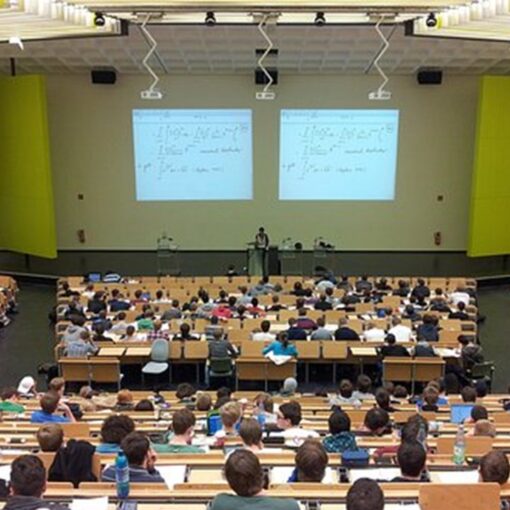If there is any figure of speech that is overused – not surprisingly! – it is the hyperbole. And so is the oft-used expression ‘the end of an era’, but it truly is as ExxonMobil, or Esso as it used to be called, has reportedly called time on its activities in the UK sector and has put its assets here up for sale.
For those young folks, one needs to know that way back when at the beginning of activities in the UK North Sea, circa 1964, Shell and Esso established a formidable joint venture to hold licences here in a 50:50 venture that would become Shell UK Expro or more simply Shell-Esso. Now it might have appeared at times that it was simply Shell because it was the operator, but that was never the case. Esso had its people here in significant numbers to oversee how its money was being spent.
And for those involved in subsea, it was even more true as Esso had done things in the Gulf of Mexico, ie the Submerged Production System (SPS), that had not been done yet anywhere else. Shell had been tinkering with subsea – if you are really old you might even remember P1 – but it was not until the j/v decided to plunge into the Underwater Manifold Centre development at Central Cormorant that subsea was to begin to be taken seriously. Esso had its SPS men over here – Bil Loth is probably best known, but there was also project director Mike Brady and others. So many of today’s subsea oldies have the UMC project on their CV’s that you might have thought the whole industry worked on that project.
UMC was iteration 1 of SPS – number 2 was the Snorre SPS in Norway – and put into use so many newfangled ideas that it is difficult to remember them all, but it has now somewhat faded into history. Last autumn, I gave papers on subsea technology at two different Subsea UK events and at both I had young subsea engineers come up to me to say that they were very grateful to learn about the origin of some technology that they were specificying and had, of course, been first deployed at the UMC 30 plus years ago. Whew. Did that make me feel old, but is also a salutary lesson for those looking to avoid repeating mistakes. One has to know what was done before and whether it worked or not before taking any new decisions.
It is also important to remember the significance of the UMC in relation to everything that has been done in the last 30 years. It was the UMC and Conoco’s Hutton tlp, both trialled in UK waters, that were engineered and deployed for applications that did not require that technology, but as testbeds for future applications.
And just a final note: one should not forget that Mobil in its day before the takeover was an operator with subsea in its blood. While it did development projects in the UK – mostly around its Beryl hub – it was also the sponsor of Kvaerner’s SAS subsea processing technology project over in Norway. It never saw the light of day, but it did provide ideas for future technology.
************************************************************************************************************
Two timely (!) items: There is no such thing as an ‘old’ discovery. This week Norway’s Petroleum Safety Authority approved startup for Equinor’s Utgard field, a subsea satellite to the Sleipner platform. This field was first discovered in 1982. It took only 37 years to get it into production.
That is relatively young compared with another upcoming development in the UK’s Southern Basin. Independent Oil & Gas has already filed an environmental impact statement for its planned Blythe unmanned platform project which includes a subsea satellite at Elgood. Blythe was discovered in 1966 by Burmah! I was still in high school in Brooklyn at that time.
But seriously, IOG is probably seen as a heroic new operator by the Oil & Gas Authority as it is both reviving infrastructure – the Thames gas pipeline to Bacton – and executing a regional hub development that involves not just Blythe/Elgood, but Southwark/Nailsworth/Eiland.
***************************************************************************************
The offshore sector as a whole, and the subsea subdivision in particular, has had, over time, a number of periods of big investment. The most notable was during the seemingly inexorable rise towards the $100 barrel of oil during the early part of the current decade. Lots of operators were driving forward into deepwaters in various sectors around the world which for the most part meant either floaters with subsea wells or subsea on its own tied back to existing platforms, new platforms, other established infrastructure or even directly to shore.
All of that activity put significant pressure on manufacturers, installation contractors and other suppliers to expand their capability to meet market demands. Some folks, notably the rig contractors, spent very big, but mostly off the back of long-term contracts, although even some of those seemed to have some sort of escape clauses. The tougher investment decisions were to be made by hardware manufacturers and vessel owners in the anticipation of contracts.
In the aftermath of the late 2014 oil price crash, there has been little investment – not none, but not much – as companies spent much time on streamlining processes and implementing cost-saving strategies. So I found it noteworthy this week that Saipem announced plans for a new spoolbase on the Gulf of Mexico. Saipem has always operated in a different way from other installation contractors, but it is still interesting that a company is prepared to spend some capital in these days.





3 thoughts on “ExMob exits stage left with a subsea legacy”
“…if you are really old you might even remember P1…”
Whilst if you are pre-historic, you’ll be unable to forget Brent-7 in 1976, during the manic time that the tie-back platform, Brent Bravo, was totally consumed with getting the first Brent platform wells up and running!! That should be fertile ground for those who have like me by now just about forgotten everything else!
I remember UMC great achievement , a lot of onshore testing and rehearsal appropriate at time before the ROV was born , Ekofisk Norway had been producing subsea for years with a jack up platform ,and then came Hamilton Bothers oil & gas first North Sea oil Production Argyll field in June 1975 , all subsea with a floater. Others did their own things with other budgets, focus and technology available over 40 years. And some do remember most of it.
Who out there remembers the Chevron Ninian triple with TFL and a whole lot of new stuff. Anybody got pictures? Roger Osborne